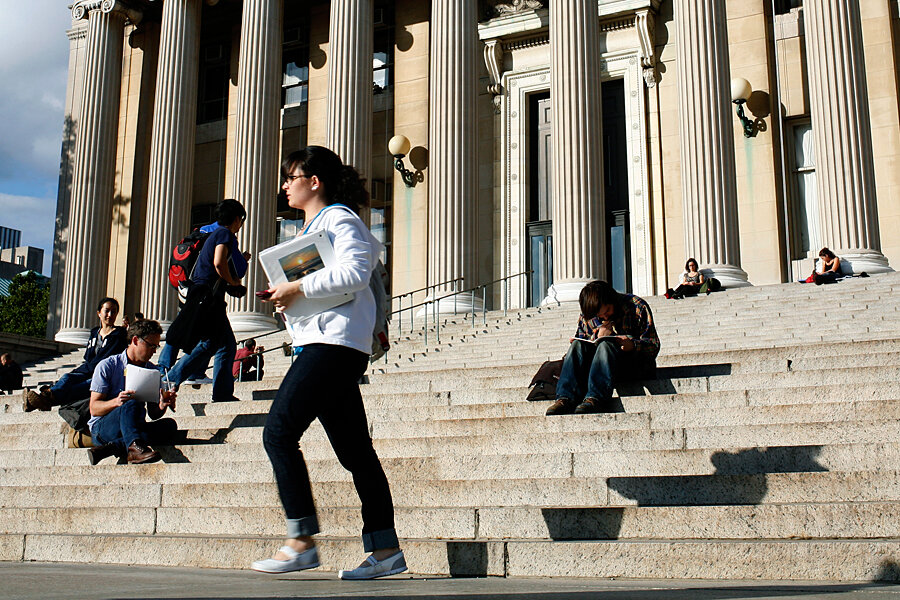Record 900,000 international students in US: the top countries they hail from
Loading...
A record number of international students – nearly 900,000 – studied in US colleges and universities during the 2013-14 school year, 8 percent more than the previous year. And while students from China continue to dominate, students are coming to the United States from an increasingly diverse set of countries.
More US students also chose to study abroad, though the share of US students who study abroad for some portion of their undergraduate years is still less than 10 percent.
The "Open Doors" report released Monday – an annual report put out by the Institute of International Education and the State Department – is the most recent breakdown of international education statistics: who comes here and where US students go. This year, the report also highlighted trends over the past 15 years, noting that since 2000, the number of international students in the US has grown 72 percent.
"It would seem after Sept. 11 that international exchange might have slowed down or ground to a halt, but the numbers have continued to grow on both sides," said Peggy Blumenthal of the Institute of International Education on a call with reporters. "In today’s very complicated world, it’s educational exchange that is the hope that we can find ways to work together."
Highlights from this year's report include:
• The bulk of international students coming to the US still come from China. In 2013-14, nearly 275,000 Chinese students studied at US undergraduate and graduate universities, an increase of almost 17 percent from the prior year. But several other countries also saw double-digit increases, including Kuwait (an increase of 43 percent), Brazil (22 percent), Saudi Arabia (21 percent), Iran (17 percent), and Venezuela (14 percent). Many of those increases were due to scholarship programs put in place by the country of origin.
• India sends the second largest number of students to the US, after China, and this year that number grew by 6 percent to just over 100,000 students. The growth was a reversal of a three-year trend of declining numbers of Indian students at US colleges and universities. That growth was due to graduate students.
• Together, the top three countries sending students to the US – China, India, and South Korea – represent about 50 percent of all international students in the US, though the number of students from South Korea declined slightly.
• The fastest-growing region this year was the Middle East and North Africa, with 20 percent more students coming to study in the US. Some 6 percent of international students now come from Saudi Arabia.
• International students contributed some $27 billion to the US economy last year, an increase of $3 billion from the prior year.
• For the first time, four universities – New York University, University of Southern California, University of Illinois in Urbana-Champaign, and Columbia University – each hosted more than 10,000 international students.
• The number of US students studying abroad for academic credit rose by 2 percent to 289,000 – a smaller increase than the year before. Most of those students had short-term experiences of eight weeks or less. Students majoring in STEM fields (math and sciences) had the biggest increase and now make up the largest portion of US students studying abroad.
• Britain remains the most popular destination for US students studying abroad, followed by Italy, Spain, France, and China. But several other destinations saw double-digit growth, including South Africa, Denmark, South Korea, Peru, and Thailand.
Increasing the number of US students who study abroad is still a goal, said Evan Ryan, assistant secretary of State for Educational and Cultural Affairs, in a call with reporters, noting that international experience and a broad worldview are increasingly necessary in a global economy. "There's work to be done to make it more acceptable and more affordable," Ms. Ryan said.






